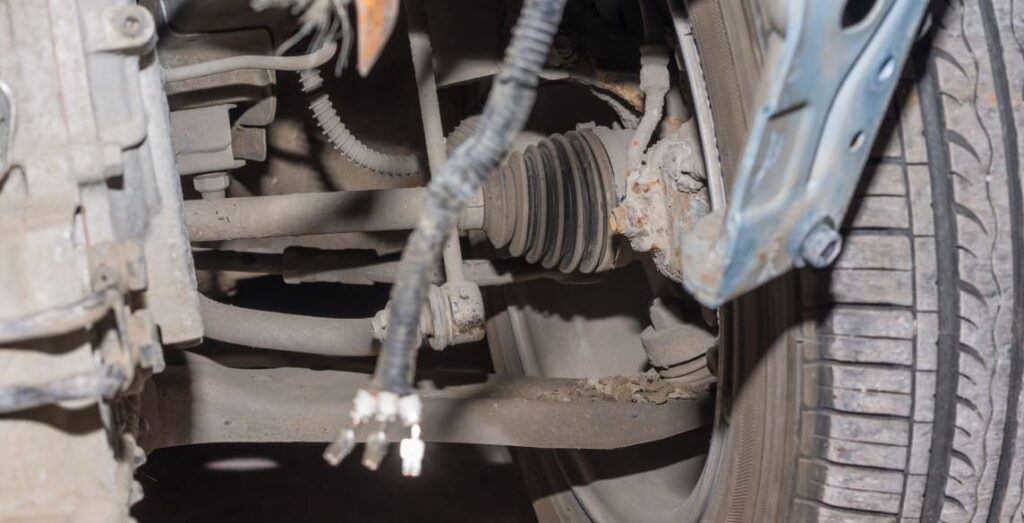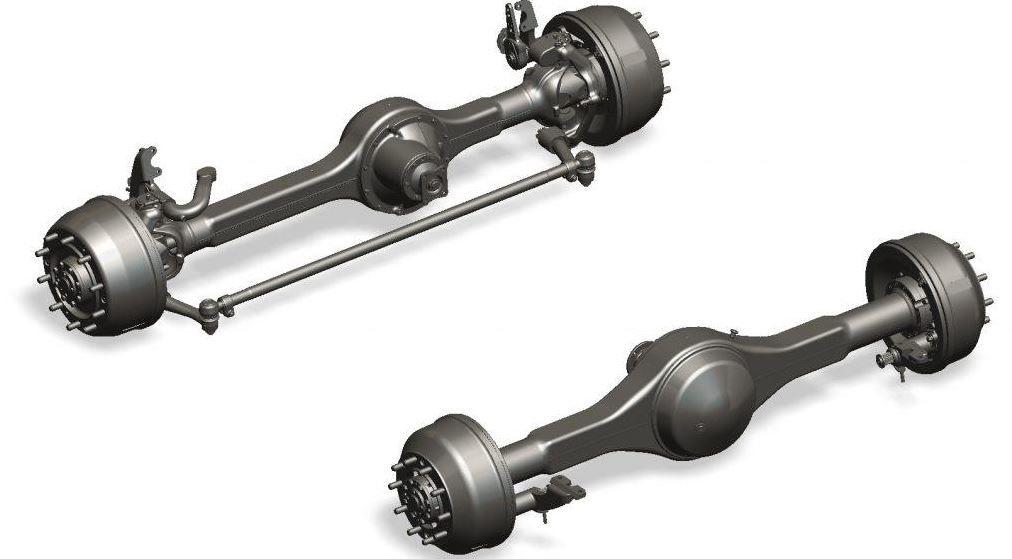Last updated on July 11th, 2023 at 08:47 pm
Let’s discuss some common automatic transmission problems and solutions in this post, One of the tricky sections of your automobile is the transmission. Therefore, it’s critical to address issues as soon as they arise the moment you notice any automatic transmission problems because, if these problems are neglected, they might have catastrophic consequences for your vehicle that will be way more expensive to fix.
Common automatic transmission problems:
- Leaking/Insufficient Fluid
- Using a grinder or shaking
- The Smell of Burning
- Car is unable to switch gears
- The Check Engine Light is on.
- In Neutral, there is a lot of noise in the transmission.
- Gears that are slipping
- Clutch dragging
Note: Due to the heat and friction caused by its numerous moving and interacting components, it undergoes more significant wear and tears over time than most other sections of your car.
When it comes to your transmission, the problems that cause them may quickly pile up unless you know what to look for and how to look for them.
Read also this: Why is My Top Radiator Hose Hot and Bottom Cold?
Overview on automatic transmission problems and solutions
When it comes to transmission maintenance or upgrades, they can be complicated and expensive, so it’s a wise suggestion to pay an alert to any odd behavior.
Following the prescribed maintenance techniques (with your car user manual) and schedule can help your transmission last longer, perform better, and require fewer repairs during its lifetime.
Keynote: The disturbing issue is that most individuals are unaware that replacing an automatic transmission is more expensive than replacing an engine. It’s time to start thinking about the problem and figuring out how to remedy it as soon as you notice anything isn’t quite right with your vehicle’s operation.
Understanding the actual reason for a transmission problem allows you to have it fixed as soon as possible and feasible for the least amount of money. Below are some essential tips if you want to troubleshoot the cause of an automatic transmission malfunction.
- First, try to figure out what’s wrong with your engine by inspecting it.
- Make sure the transmission fluid is clean.
- Examine the diagnostic codes on the vehicle’s dashboard.
- Consult your auto repair manual or the internet.
- Pay a visit to a professional mechanic’s shop.
However, if you’re having automobile difficulty, it’s crucial to understand the most frequent sorts of transmission malfunctions then you can assess and repair them quickly.
Automatic transmission high RPM before shifting
High RPMs cause increase fuel consumption and put additional pressure on your engine. It’s time to send your car to a repair shop for a transmission examination if the engine starts to rev higher before a gear shift during acceleration or if you feel a jerking feeling.
Transmission fluid is utilized to grease, calm, and generate power from the engine to the transmission in an automatic transmission. As a result of the gearbox band or torque converter sliding, the car will begin to rev at more incredible speeds when the transmission develops a leak and fluid levels fall.
Keynote: A sliding clutch might be the cause of this problem in a manual car. A weaker clutch pedal resistance and loss of power, and difficulties maintaining speed are all signs that this is the case.
As drivers, Based on the vehicle’s RPM (revolutions per minute), we determine when to shift gears. Switching at a higher RPM boosts the automobile’s acceleration, but the engine will be damaged if the RPM rises too high or the car may explode.
What causes a transmission not to shift
There are a variety of reasons why your car’s gears may change slowly. These are only a few:
- Gears that have been worn out
- Problems with the valve body
- soiled gear oil
- Burnt Clutch disc
- Torque converter failure
- Transmission overheating
When having shifting issues with your transmission, knowing where to look is essential to solving the problem faster. A vehicle’s transmission is just as crucial as its engine.
First of all, consider starting from a stop in fifth gear or leaving your car in first gear and attempting to sustain speed on the freeway.
The automatic transmission is a sophisticated and delicate mechanism, and it should be treated as such. The transmission directs power from the engine to the driveshaft of the car.
Keynote: Due to the friction and heat created by the multiple components that move and interact, the gearbox wears out faster than most other vehicle components.
Today’s engines are built to operate safely within a narrow range of speed, or RPMs. So when the digits on your tachometer turn red, it means your engine’s capacity to spin safely has reached its maximum.
Automatic transmission not shifting into high gear
A shortage of fluid in the transmission is usually one of the primary causes of the automatic gearbox not shifting into high speeds or not changing gears at all. This is commonly caused by a worn-out oil seal in the unit, which causes the fluid to leak.
Automatic transmissions may vary based on the manufacturer and model of the vehicle, but the most prevalent reasons for shifting issues are the same.
Keynote: Another of the most pervasive errors that lead to this automatic transmission malfunction is many drivers’ terrible habit of changing in “D” drive mode without halting when trying to reverse.
A faulty AT fluid cooler might result in transmission oil leakage. As a result, because the transmission oil’s volume is higher than the cooling system’s, it might seep into the car’s radiator. Leaks of AT fluid can also seep into the coolant while the engine is turned off, forming emulsions in the engine and gearbox.
Automatic transmission only shifts manually
The back of the transmission may have a defective shift governor. As you accelerate, the governor will shift the gearbox. A manual gearbox is used in some instances, whereas an electronic transmission is used in others.
In any case, it’s in the transmission’s tail shaft region, and a skilled transmission technician will need to inspect it to determine whether it’s stuck and not operating correctly.
Alternatively, It might potentially be a sensor problem. It might come from a variety of sensors. The major one is the VSS, or vehicle speed sensor. It can be caused by loose or defective wiring, a malfunctioning PCM, or a faulty Throttle Position Sensor.
Summary:
In the worst-case scenario, you’re dealing with a broken forward apply band. However, if you look for it in the trans area, you’ll discover a few other males who have had similar experiences with the same symptoms.
This necessitates a complete rebuild, as the forward apply band was one of the final items to emerge from the casing. However, you could find a fragment of the broken band sitting in the lower pan if you drop it.
How to fix Nissan Xterra transmission problem
Buying a secondhand transmission is the easiest option to address your transmission problems. To get one, try visiting junkyards to check if they have them, and they usually come with a 30-90-day guarantee. In addition, the fact that they are “used” typically indicates that they are still in good functioning order.
Unfortunately, there’s no way to tell if the internal components are in good shape, so you might wind up spending a lot of money to have the same problems. Furthermore, the guarantee only covers the transmission if it’s malfunctioning, not the labor charges. Why Transmission Fluid Leaking From Bell Housing, In Front & Flywheel?
Option Two:
A rebuilt transmission is another possibility. Your transmission will be removed during the rebuild, and a local repair company will install a slew of new parts. The difficulty is that each transmission rebuilder’s abilities and expertise vary significantly from shop to shop, so you may suffer issues due to anything that hasn’t been done accurately.
The 5-speed RE5R05A transmission was standard on the Nissan Xterra, whereas early vehicles used the 4-speed RE4R01A. A common issue faced by drivers with the RE5R05A was malfunction due to the factory radiator.
In turn, this enables the engine coolant to enter the transmission through the coolant; this could be remedied by replacing the RE5R05A valve body.
How often does a Nissan Xterra transmission need to be replaced?
A Nissan Xterra transmission’s total lifespan is primarily determined by how well it has been maintained. Transmissions on Nissan Xterras last 130,000-180,000 miles on average.
Nevertheless, if all of the original design problems have been corrected and the car is regularly serviced, a high-quality new transmission can function for an extended period.
What forces delayed shifting automatic transmission problems?
You are likely to experience delayed shifting when valves clinging to the valve body create delayed shifting, preventing shifts from occurring correctly. The fault might be with the shift solenoids used to activate modern automobiles that employ computers to regulate shifts.
Assuming this becomes the situation, these transmission components will be repaired. Another major factor that contributes to shifting delays is poor maintenance and high mileage.
While it functions as a coolant system, transmission fluid keeps inner seals lubricated to avoid hardening or wearing out. However, it can’t safeguard key components if the fluid isn’t changed frequently enough or at the right amount.
How to fix it
Should you detect a delay, the foremost thing you should do is inspect your transmission fluid. The volume, color, and smell of the liquid will indicate the state of your transmission. When your fluid quantity is down, the color is black, or the smell is putrid. Therefore, you must take your car to a service facility right once.
Why the delayed shifting when accelerating
The shifts are designed to be delayed or, to put it another way, the transmission is supposed to shift at higher RPMs when you accelerate quickly. You wouldn’t be able to merge safely onto a freeway if the transmission didn’t work like this.
Case study: your 3-speed transmission might execute the 1-2 shift at ten mph and the 2-3 shift at 25 mph while you’re going slowly, but when you press the gas pedal, those identical shifts might happen at 20 mph and 45 mph.
While new cars with an automatic transmission may not have this problem, you must observe the state of your vehicle at all times. Even if your vehicle is brand new, don’t ignore something like this. Why? Delaying a diagnosis or repair can only increase repair costs in the long run.
Related Articles:
- Does Nissan Rogue Have Transmission Problems (2015, 2016 & 2017)
- 4l60e vs 4l65e Identification: Are All 4l60e Transmissions Interchangeable?
- Causes of transmission problems after CV joint replacement (Bad CV axle Vibration)
- Is CVT Better Than Automatic Transmission (See Pros & Cons)
Reason for automated transmission making rattling noise.
One of the most prevalent indications of transmission failure is rattling. In transmission with hundreds of pieces, a single bearing or even a worn casing may cause a disturbing noise.
Causes of rattling noise.
- Broken heat shield: Because of their proximity to the ground, heat shields are prone to breaking. They are frequently seen in the vicinity of the gas tank and exhaust pipe. This exposes them not only to debris but also to moisture, increasing the risk of corrosion.
- Valve Train Issues: This is probably a problem if your automobile makes a rattling noise like clattering glass jars. This mechanism controls intake and exhaust valves. Unfortunately, it’s frequently caused by dirty oil or not using the right octane gas level when you fill up your automobile.
- Low engine oil level: The engine isn’t receiving enough oil or being properly lubricated if its oil level is low. Friction between the engine’s internal components will rise if it is not adequately lubricated. When the engine is accelerating, this might cause rattling noises. Immediate repairs are required to prevent significant damage.
- Damaged motor mount: Because its components are made of rubber and metal, there’s hardly anything stopping them from moving about if they’re shattered. Kept unattended, this issue can lead to significant damage. A broken or fractured exhaust system, a loss of handling, or a breakdown of the powertrain are all options.
Regrettably, the rattling noises are more than just a nuisance. It contributes to transmission failure in the end. When accelerating, a car’s rattling becomes a call for maintenance that has to be answered.
From the list I made above, car rattling sounds can mean several things. First, many of them are caused by a lack of timely care. Second, letting signs like these slide only compounds the issue you have to fix eventually.
Conclusion
Automatic transmission issues come in various forms. The most important thing is how we treat them when they occur or when we notice the symptoms. I hope this article helps you answer some puzzling questions about your vehicle. To mitigate against unnecessary repair costs, try your best to take your car to professional mechanics for regular maintenance. Where Is the Automatic Transmission Speed Sensor Located( Bad Speed Sensor)

Uchenna is a Radiographer and Auto parts mechanic who recently got his automotive diploma as an auto repair technician, and since then, has worked on fixing various car problems.
Working as just a radiographer, Uchenna didn’t just get all the fulfillment he desired, because he truly loved doing things tilted toward cars. As a kid, he would take apart his toy cars to see how they worked and would spend hours tinkering with his bike.
So, in 2017 he made the tough decision to become an auto mechanic. He threw himself into his studies and now loves every aspect of what he does.
He gets to work with his hands, solving problems and bringing cars back to life, and sharing his knowledge and easy quick-fix guide online are all part of what makes him feel fulfilled.



